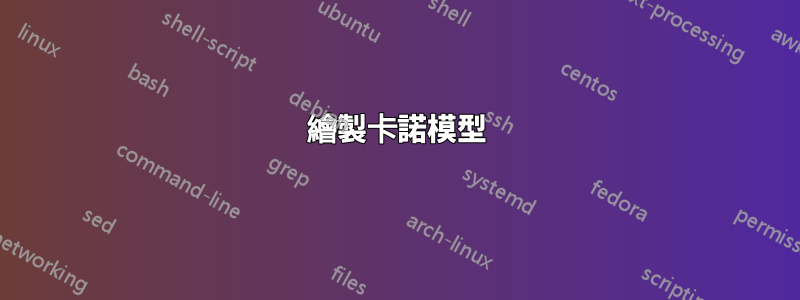
我想知道是否有人可以告訴我繪製下圖的最簡單方法。我開始使用 pgfplots 套件中的 axis 環境,正如您從下面的程式碼中看到的那樣,但後來我陷入了困境。
我提前謝謝你!
\documentclass{standalone}
\usepackage{pgfplots}
\begin{document}
\begin{tikzpicture}
\begin{axis}[axis lines=middle,axis equal,grid=both]
\addplot coordinates{(0,0) (5,5) };
\end{axis}
\end{tikzpicture}
\end{document}

答案1
我認為沒有必要使用pgfplots。我認為您只需使用即可獲得您想要的效果(並且更容易一些)tikz。
\documentclass[border=5pt]{standalone}
\usepackage{tikz}
\usetikzlibrary{calc}
\usetikzlibrary{arrows.meta}
\begin{document}
\begin{tikzpicture}
\coordinate (Q) at (0,0);
%% put this first even though you can use opacity.
\coordinate (indifferent/nw) at (-0.5in,0.5in);
\fill[gray,opacity=0.20] (indifferent/nw) rectangle ++ (1in,-1in);
\path (indifferent/nw) ++ (-0.5cm,0.5cm) node[anchor=south east] (indifferent/label) {indifference};
\draw (indifferent/nw) -- (indifferent/label.base east);
\draw[arrows=-Stealth,purple]
(Q) ++ (-2in,0) node [anchor=east,align=center,text width=0.75in]
{Need not~fulfilled}
--
++ (4in,0) node [anchor=west,align=center,text width=0.75in]
{Need well~fulfilled};
\draw[arrows=-Stealth,purple]
(Q) ++ (0,-2in) node [anchor=north,align=center,text width=0.75in]
{dissatisfied}
--
++ (0,4in) node [anchor=south,align=center,text width=0.75in]
{satisfied};
\draw[blue,text=blue]
(Q) ++ (-2in,-2in)
--
++ (4in,4in) node[pos=0.75,anchor=north west] {Performance};
\draw[red,text=red]
(Q) ++ (-2in,0.25cm) .. controls (-0.5cm,0.25cm) and
( 0.5cm,1.00cm)
..
(1.25in,2in)
node[pos=0.95,anchor=south east] {Excitement};
\draw[red,text=red]
(Q) ++ (-1.25in,-2in) .. controls (-0.5cm,-1.00cm) and
( 0.5cm,-0.45cm)
..
(2in,-0.5cm)
node[pos=0.80,anchor=north west] {Basic};
\end{tikzpicture}
\end{document}

這裡的基本想法是\draw命令實際上是一種路徑,並且node可以沿著這些路徑定義 s。特別是,我們可以透過使用節點pos=<val>的可選參數來指定節點的位置。錨定有助於將文字放置在我們想要的相對位置。 text width結合使用align有助於使標籤沿x- 軸包裹並居中(我曾經~將well和fulfilled粘在一起)。最後,文字的顏色也可以text=<color>在可選參數中指定。最後,我用來.. controls (<coordinate>) and (<coordinate>) ..建構曲線。現在我想到我應該嘗試讓這些變得更漸近表現,但我讓你調整它。
答案2
對於這種半技術草圖,您可能會考慮梅塔普斯特作為替代工具。在這裡,我遵循我的首選順序來保持一切井然有序:定義路徑(盡可能相互相對);畫出它們;然後添加標籤。

prologues := 3;
outputtemplate := "%j%c.eps";
beginfig(1);
% set a unit scale
u := 1cm;
% define the various paths
path fulfillment, satisfaction, indifference, performance, excitement, basic;
indifference = unitsquare shifted -(1/2,1/2) scaled 2u;
fulfillment = (left--right) scaled 3u;
satisfaction = fulfillment rotated 90;
performance = (xpart point 0 of fulfillment, ypart point 0 of satisfaction)
-- (xpart point 1 of fulfillment, ypart point 1 of satisfaction);
excitement = point 0 of fulfillment shifted (0,1/3u)
{direction 0 of fulfillment} ..
{direction 1 of performance}
point 1 of performance shifted (-1/3u,0);
basic = excitement rotated 180;
% draw the paths
fill indifference withcolor .9 white;
drawarrow fulfillment withcolor .5 white;
drawarrow satisfaction withcolor .5 white;
draw performance withcolor .67 blue;
draw excitement withcolor .67 red;
draw basic withcolor .67 green;
% do the labels
verbatimtex
\font\ss=phvr8r\ss
\def\s#1{$\vcenter{\halign{\hfil{##}\hfil\cr#1\crcr}}$}\let\\\cr
etex
label(btex \s{satisfied} etex, point 1 of satisfaction shifted 10 up);
label(btex \s{dissatisfied} etex, point 0 of satisfaction shifted 10 down);
label(btex \s{needs not\\fulfilled} etex, point 0 of fulfillment shifted 28 left);
label(btex \s{needs well\\fulfilled} etex, point 1 of fulfillment shifted 28 right);
z1 = point 3 of indifference shifted (-u/2,u/2); draw point 3 of indifference -- z1 withcolor .9 white;
label.lft(btex \s{indifference} etex, z1 + 3 up) withcolor .7 white;
label.ulft(btex \s{excitement} etex, point .9 of excitement) withcolor .67 red;
label.lrt (btex \s{performance} etex, point .8 of performance) withcolor .67 blue;
label.lrt (btex \s{basic} etex, point .2 of basic) withcolor .67 green;
endfig;
end.
筆記
上面的連結向您展示了將 MP 整合到工作流程中的各種方法,並包含指向手冊的連結。
我為所有路徑使用了相當長的名稱,以便您可以更輕鬆地追蹤正在執行的操作
u您可以透過調整頂部的值來變更繪圖的比例。直路只有一段,所以
point 0是起點,也是point 1終點。我將其定義為順時針旋轉 90 度
satisfaction的副本,以及旋轉 180 度的副本。fulfillmentbasicexcitement我定義了一些非常簡單的純 TeX 指令,讓我可以整齊地設定標籤。您也可以使用 LaTeX,如手冊中所述。事實上,透過
gmp包,或透過luatex或context你可以將 MP 程式碼作為 LaTeX 原始檔的一部分包含進來,例如 TikZ。


